#a. z. fell
Text

michael with the aziraphale hair but in his regular clothes really does something to me man 🫠
#personal#idk why but good god#WOOF#incapable of being Normal about this#i want him so bad#michael sheen#good omens#aziraphale#a. z. fell#a z fell#mr fell#mr. fell#aziraphale fell
103 notes
·
View notes
Text
Crowley definitely wrote this book to try and get Aziraphale to swear

#good omens#gomens#ineffable husbands#anthony j crowley#crowley#good omens crowley#a. z. fell#ineffableproblem#aziraphale#good omens aziraphale
88 notes
·
View notes
Text

🤭 It would be a shame 😫 if some demon 😏 tried to tempt me 🥵 while I'm all like this 🥺
ko-fi.com/opscuritas
#who do you think you're kidding Azi#also what do you think about this style? I'm trying something#myart#good omens#go aziraphale#a. z. fell#good omens aziraphale#michael sheen#aziraphale
2K notes
·
View notes
Text
Can I hear a wahoo if you've fallen inadvertent victim to the Welsh Seduction Machine
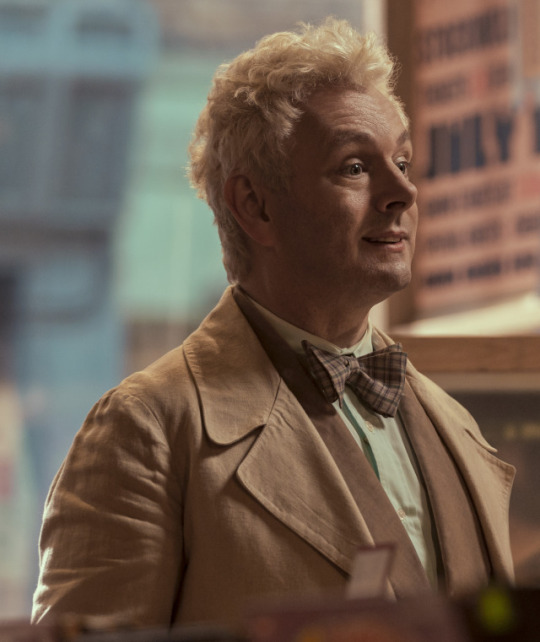

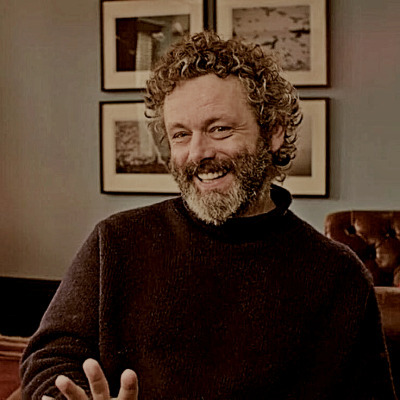
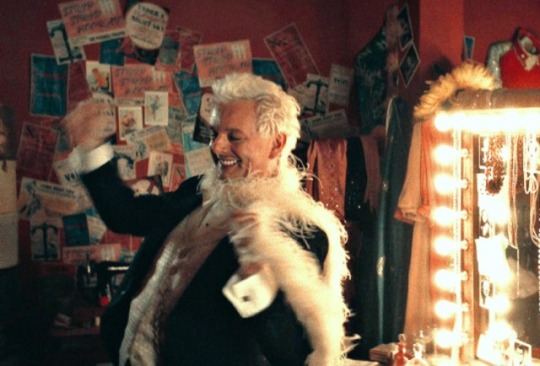
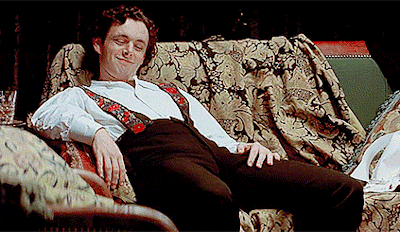
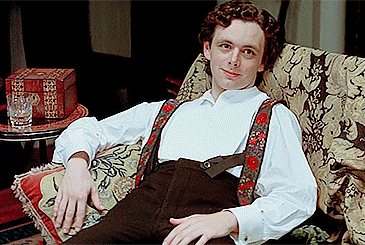


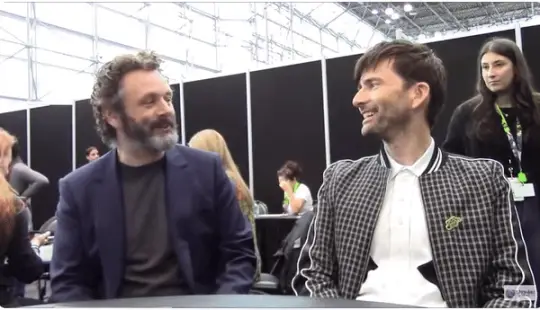
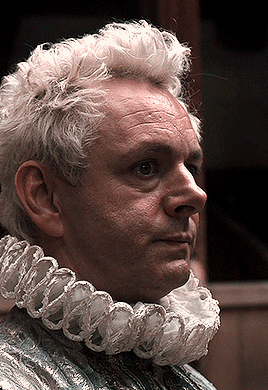


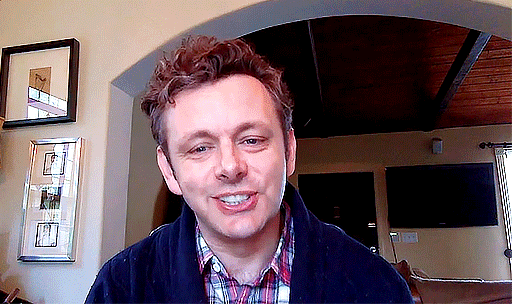
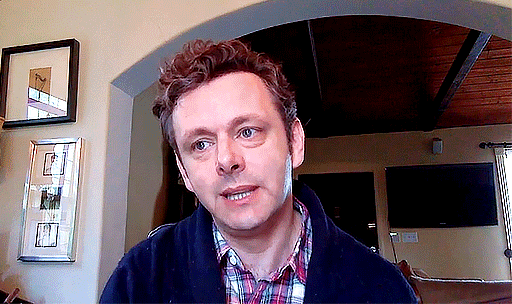


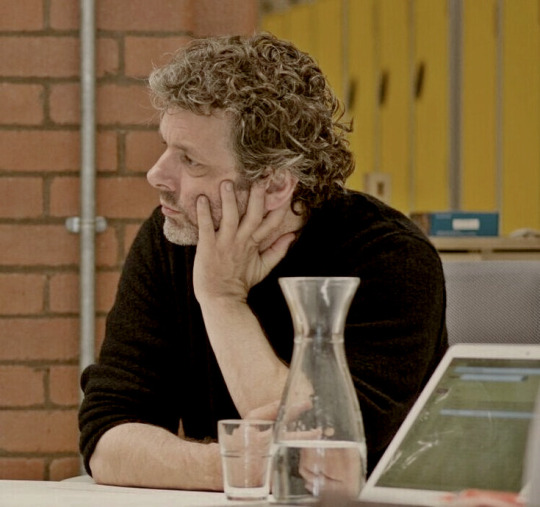





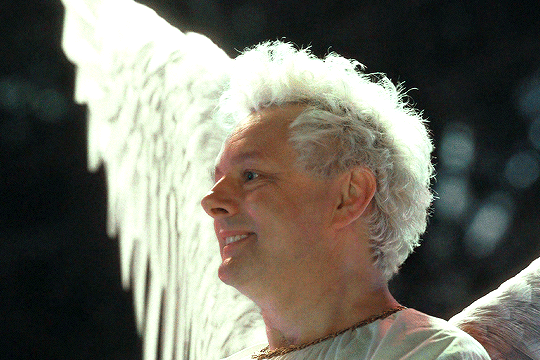

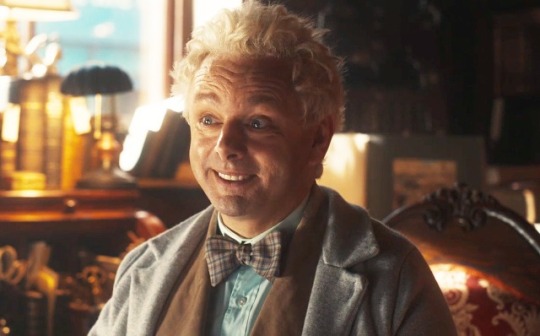

#welsh seduction machine#The Welsh seduction machine#Michael Sheen#Aziraphale#Gomens#Good omens#Azi#Azira#Wilde#a z fell#a. z. fell
273 notes
·
View notes
Text
Go For a Picnic. Dine at the Ritz...
Okay, I've got an absolutely miserable take on the 1967 scene in the Bentley, after Aziraphale gives Crowley the tartan thermos of holy water.
‼️TRIGGER WARNING‼️, this is going to get a little dark with Aziraphale's assumptions about Crowley's suicidal ideations. Be careful, please.
We all know Crowley has been pining after holy water. (In my dismal opinion, whatever was done to him after he saved Elspeth's soul from damnation in 1827 must have been horrendous, and that's where this request came from.) He asked for it in 1862 when he met with Aziraphale in St. James Park, and was turned down.
And we all already know exactly what Aziraphale thought he wanted it for.

We also know he discovered in 1941 that it was available in churches. No guards surrounding it, and that anyone could just go in and take it.
"Look at that! A whole fontful of holy water. It doesn't even have guards." (His genuine surprise that it's just THERE for the taking.)
Anyway that's not what this is about - this is about Aziraphale's response in 1967.
Obviously, we're all hooked on:

Because, ouch these poor babies really know how to ruin our lives.
So many meanings here. The obvious - you drive like an absolute mad lad and I don't want to be discorporated in a car accident (good lord, the paperwork). The less obvious but definitely there - you jump into things so quickly, I can't keep up.
BUT I'm stuck on this bit:

In my first watch through, I didn't think much of it. "Don't look so disappointed." We can hang out later. I just don't want to drive with you when it's not necessary because you're absolutely terrifying behind the wheel. I'm not telling you to fuck off, call me for dinner some time.
BUT NOW, on my... 5th? 6th? I'm losing track (and my mind) watch, I see it as... begging? As Aziraphale not knowing how to articulate what he's feeling, but desperately trying to communicate it to Crowley anyway.
Because he still thinks Crowley wants the holy water as a way to destroy himself.
I see it as something along the lines of this miserable list;
Please don’t kill yourself.
I need you to not go through with this.
I don’t want to withhold my companionship from you, but I need you to look forward to our time together later so you don't do this now.
I’m not going to spend time with you now, I can’t let you use it as some final goodbye in your mind.
We can go for a picnic, please stay alive long enough for us to do that.
We can dine at the Ritz, please stay alive long enough for us to go there.
And, to be honest, watching it through again with this lens, I wonder if Aziraphale is more grateful for Crowley's company every time they see each other because he didn't go through with it.
I wish I could find a better way to articulate this, and the way it wrings out my heart like a wet rag, but here we are.
Enjoy my misery with me.
#good omens#crowley#aziracrow#aziraphale#gomens#goodomens#good omens 2#ineffable husbands#david tennant#ineffable idiots#michael sheen#anthony j crowley#a. z. fell#good omens meta#is this a meta?#I'm realizing that I don't actually know what a meta is#good omens analysis#good omens scene analysis#I make myself really sad sometimes#ineffable partners#ineffable spouses#good omens 1#angst#ineffable angst#good omens angst#crowley angst#aziraphale angst
235 notes
·
View notes
Text
Aziraphale, on the phone: hi, this is Aziraphale.
Crowley: what did he do this time?
Aziraphale: no, Crowley, it’s me, Aziraphale.
Crowley: oh… what did you do this time?
#good omens#aziraphale#crowley#aziracrow#crowly x aziraphale#incorrect quotes#incorrect good omens quotes#a. z. fell#anthony j crowley
121 notes
·
View notes
Text
Aziraphale: That was a nice thing to do.
Crowley: I didn't do it to be nice.
Crowley: I did it to be amazing.
#ineffable husbands#aziraphale#a. z. fell#crowley#anthony j crowley#aziracrow#aziraphale x crowley#crowley x aziraphale#incorrect good omens quotes#good omens incorrect quotes#good omens
94 notes
·
View notes
Text
A. Z. Fell & Co. bookshop and its statues, part 2
Welcome to the second part of my insane deep dive into Aziraphale’s world of slightly outdated decor, golden-colored trinkets, and their ostentatiously Greek (especially for a representative of an originally Judeo-Christian mythology) symbolism. As a short recap, the last installment covered six pieces in the northern and central sections of the bookshop plus a plot-important medal previously displayed on one of them, but currently left with the other bibelots on the bookseller’s desk. We’ll start right there, where we previously left off.
While a lot of the bookshop action plays out in the circle between the formerly discussed statues, its office part is especially close to Aziraphale himself. As the titular Guardian of the Eastern Gate, the angel consciously spends most of his time in this small space in the Eastern part of the bookshop, confined to his desk or reading stand. This means that the decorations of this area have more personal significance and are most probably used as daily reminders for him to keep his thoughts and priorities on track as much as provide pleasant distraction from the weary eyes.

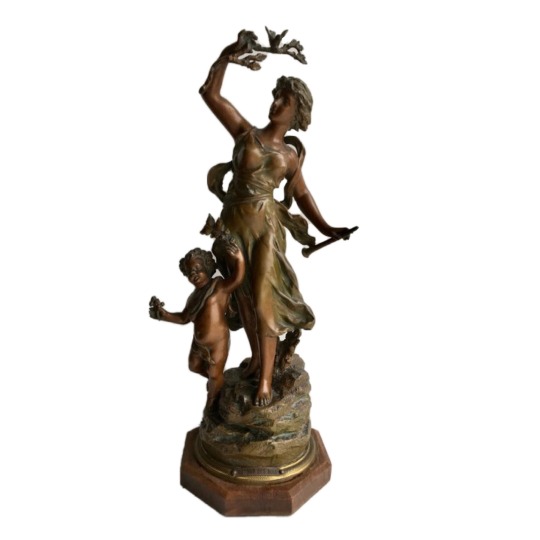
The two windowsill figures of the Art Deco dancers from S1 were replaced by a somewhat similar set of twin statues by Ernest Rancoulet called Retour des Bois (Return from the Woods). Depicting a young woman accompanied by a putto, Aphrodite and Eros, frolicking in a dance through the woods and meadows. This bucolic fantasy with Aphrodite makes some sense when we consider how Aziraphale’s personal love story started (and will presumably end) in a garden, but let’s deep deeper into its protagonists. Or protagonist, actually, because what else can be told about Love itself?
Eros as the god of Desire is usually presented in art as a handsome young man, though in some appearances he is a boy full of mischief, ever in the company of his mother. It is usually under the guidance of Aphrodite when he employs his signature bow and arrows to make mortals and immortals alike to fall in love. His role in myths is mostly complementary, as a catalyst for other mythological figures and their stories, with the notable exception being the myth of Eros and Psyche, the story of how he met and fell in love with his wife.
In short, they are the original star-crossed lovers from entirely separate worlds who meet and fall in love by divine happenstance, only to be separated by Psyche’s family. Convinced by her sisters that her husband is, in fact, a vile winged serpent, Psyche breaks his one rule and the attempt to kill the monster leads her to falling in passionate love with him. Eros flees and Psyche wanders the Earth searching for him and succumbing to a series of impossible tasks reminding of those from the Scarborough Fair ballad or the more modern fairytale about Cinderella. She ultimately fails, but is saved by the healed Eros, granted immortality and the status of his equal, after which they can properly marry with a huge wedding banquet, a real feast of the gods.
In the Christian Middle Ages, the union of Eros and Psyche started to symbolize the temptation and fall of the human soul, driven by the sexual curiosity and lust from the Love’s domain, mirroring the original sin and the expulsion from Eden.
Oh, and their Latin names? Cupid and Anima. C+A.
We’ll get back to them in a minute.

According to unnecessary but extensive research, the two mid-century table lamps standing over the desk were most probably produced in France after another unspecified 19th century sculptor like the example above, although this particular putti design can be also found in the so called Hollywood regency style of the same time period. The putto is holding onto a cornucopia, a classical antiquity symbol of plenty, which then continues to the bulb section.
The cornucopia is an easily recognizable symbol of abundance, fertility and, to lesser extant, peace and good fortune. Since the horn is phallic-shaped, but hollow at the same time, it combines intimate imagery of both male and female character at the same time, which further ties into notions of fertility. In its role as a fertility symbol, the cornucopia is also usually associated with Demeter, whose small statue is also standing on the bookshop’s counter. Which seems like a recurring theme.

I saw multiple theories about Aziraphale’s centerpiece, but somehow the truth proved to be much less significant than previously thought. This roman soldier, possibly a centurion, driving his two horses in a highly decorated chariot is made from a marble powder resin composite and takes the most visible place in the Eastern part of the bookshop even though it’s seemingly one of the newest additions to Aziraphale’s collection — its author, Lorenzo Toni, was born in 1938 and became a sculpture master by the 1970s.
At first glance, the parallel to the Marly Horses seems obvious and we could leave it basically at what was written recently on Crowley and Aziraphale’s dynamics. But here is where instead of commenting on the antique sculpture that seems to be the inspiration behind this piece or the many intricacies of Roman chariot racing I’ll do something completely unhinged — i.e., play my Greek philosophy card.
In the dialogue "Phaedrus ”, Plato presents the allegory of the chariot to explain the tripartite nature of the human soul or — you guessed it — psyche. The charioteer is the man’s Reason, the rational part that loves truth and knowledge, which should rule over the other parts of the soul through the use of logic. One of the horses, the white one, is man’s Spirit, a motivated part which seeks glory, honor, recognition and victory. The second horse, the black one, represents man’s Appetite — an ever so hungry part which desires food, drink, material wealth and physical intimacy.
And the fun part? This triad is established to analyze the madness of love. In a classical Greek context, that is not between a man and a woman, but erastes and eromenos:
The charioteer is filled with warmth and desire as he gazes into the eyes of the one he loves. The good horse is controlled by its sense of shame, but the bad horse, overcome with desire, does everything it can to go up to the boy and suggest to it the pleasures of sex. The bad horse eventually wears out its charioteer and partner, and drags them towards the boy; yet when the charioteer looks into the boy's face, his memory is carried back to the sight of the forms of beauty and self-control he had with the gods, and pulls back violently on the reins. As this occurs over and over, the bad horse eventually becomes obedient and finally dies of fright when seeing the boy's face, allowing the lover's soul to follow the boy in reverence and awe. The lover now pursues the boy. As he gets closer to his quarry, and the love is reciprocated, the opportunity for sexual contact again presents itself. If the lover and beloved surpass this desire they have won the "true Olympic Contests"; it is the perfect combination of human self-control and divine madness, and after death, their souls return to heaven.
And such a perfect combination of the motifs already introduced to us by the two Eros statues and the Head of the Victorious Athlete.

Aziraphale might be a titular Companion to Owls (or, to be precise, the companion to one particular Nite Owl), but he had also made sure to have at least one owl keeping him company. And of course, the owl of Athena (who was interestingly both a bird and a snake goddess) is an absolutely conclusion here as the universal symbol of wisdom and knowledge in the Western culture, but it can’t be that easy, right?
In the Bible, you'll find that owls often symbolize something unclean and forbidden, as well as desolation, loneliness, and destruction. This symbolic significance is pointed out in Leviticus 11:16-17 and Deuteronomy 14:11-17 where owls are mentioned among the birds not to be eaten. Owls were considered unclean most likely because they are predatory creatures who eat raw flesh with the blood still in it, and that was an even bigger food safety concern for the biblical nomads than to us today.
Owls are also among the wild predators that have long dwelled in the desert lands and abandoned ruins of Egypt and the Holy Land. Both Isaiah and Zephaniah speak of owls nesting in ruined wastelands to paint symbolic images of barrenness, emptiness, and utter desolation. In Psalm 102:3–6, the owl symbolizes the loneliness of the psalmist’s tortured heart:
For my days vanish like smoke; my bones burn like glowing embers. My heart is blighted and withered like grass; I forget to eat my food. In my distress I groan aloud and am reduced to skin and bones. I am like a desert owl, like an owl among the ruins. I lie awake; I have become like a bird alone on a roof. All day long my enemies taunt me; those who rail against me use my name as a curse. For I eat ashes as my food and mingle my drink with tears because of your great wrath, for you have taken me up and thrown me aside. My days are like the evening shadow; I wither away like grass. But you, Lord, sit enthroned forever; your renown endures through all generations.
It’s a devastating, but still beautiful piece that deals with the feeling of utter rejection, the ultimate bad breakup of the relationship between a human and their God. And this… simply didn’t happen between God and Aziraphale, not even during his Job job. The angel had always considered Her love and ineffability as a given, even when the whole Heavenly Host was against him during the Non-Apocalypse. His allegiance stayed with God, not necessarily Her angels. Which brings us yet again to the motion of Crowley as the owl.
The angel and the demon are the companions to each other's loneliness, but Aziraphale’s needs seem significantly bigger than their Arrangement that he even considered a wooden substitute protectively hovering over him 24/7. He seems to be the one who is the loneliest and most rejected.
Oh, and if you think that putting a small bronze statue of a putto with a bronze putto-shaped candleholder right behind it (visible on the filing cabinet in the bottom right corner) is already a stretch, let me show you what’s on the other side of that wall.
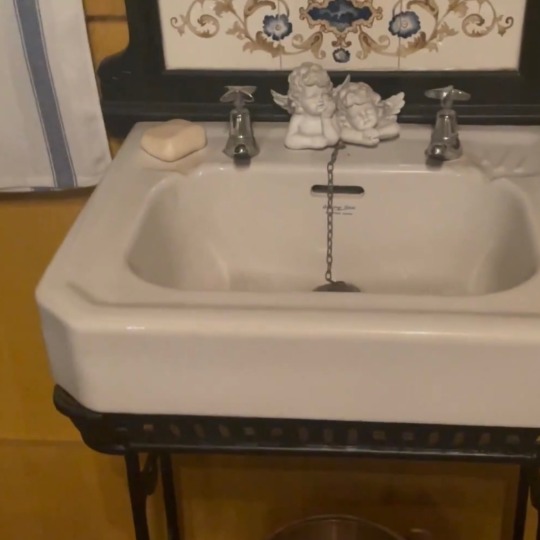

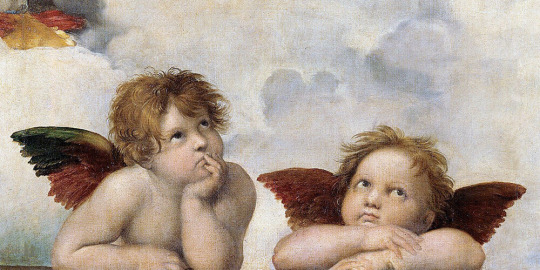
Just like before the bookshop fire, the famous sink in the small backroom is adorned with a perfectly kitschy white plaster sculpture of The Two Cherubs, a small part of a larger painting by Raphael (the painter, not the Archangel) titled Sistine Madonna. In the painting the Madonna, holding Christ Child and flanked by Saint Sixtus and Saint Barbara, stands on clouds before dozens of obscured putti, while two distinctive winged putti rest on their elbows beneath her. with bombastic side eyes and clearly unspoken, but very controversial thoughts about the whole scene and their role in it.
With an attitude like that, there’s no wonder that the putti have inspired some legends. According to one, the original cherubs were children of one of his models they would come in to watch. Struck by their posture, he added them to the painting exactly as he saw them. Another story says that Raphael was inspired by two street urchins looking wistfully into the window of a baker's shop.
The Germans implicitly tied this painting into a legend of their own, "Raphael's Dream." Arising in the last decades of the 18th century, the legend — which made its way into a number of stories and even a play — presents Raphael as receiving a heavenly vision that enabled him to present his divine Madonna. It is claimed the painting has stirred many viewers, and that at the sight of the canvas some were transfixed to a state of religious ecstasy akin to Stendhal Syndrome (including one of Freud's patients).
Their big, seemingly cherubic companion doesn’t seem to have a specific provenance, but what’s left of his limbs might suggest that it could be an infant Jesus as well as another putto. But honestly who knows at this point.
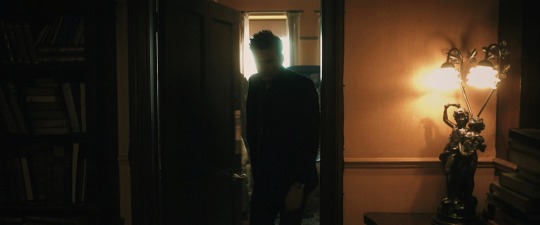

On the other side of the same room, right at the door leading to the big backroom, there are two lamps with Auguste Moreau’s Young Lovers, a bronze sculpture depicting a courting couple on the verge of a physical embrace, holding garlands of roses and hiding under some old vines. Which aligns perfectly with the beloved romcom trope of a rain shelter leading to sudden love realizations, as well as Crowley choosing this part of the bookshop to have a word with his angel in private and then offering his advice on anything related to human love. No wonder that the angel looked at him like that.
This statue carries with it more than one allegorical interpretation, intentional or not. Arguably the most obvious one is the myth of Eros and Psyche, one we already covered in this post. But similarly to his earlier sculpture, Eros also serves here as an allegory for nature and the return to the natural state itself. Like Adam in Eden, he's unclothed and symbolically crowned as a ruler of his domain. Psyche, enamored with his confidence, is about to take her own leap of faith as her fabric restraints fall away. One could say that she's tempted to follow him into nature, deep into the garden of love.
And with that exact thought I will leave you today, dear reader. Through this analysis we learnt many things, among them two significant facts about Aziraphale: firstly, he’s an utter and incorrigible romantic, and secondly, a hoarder. Forget Crowley’s souvenirs — the amount of this angel’s statues is something else. And it isn’t even his hyperfixation!
#yuri is doing her thing#good omens#good omens 2#go2#aziraphale#crowley#c+a#crowley needs a hug#aziraphale is a hoarder#ineffable idiots#ineffable husbands#ineffable divorcés#a. z. fell#a. z. fell & co.#aziraphale’s bookshop#bookshop statues#statues update#set design#the good omens crew is unhinged#raphael#greek mythology#bible fanfiction
129 notes
·
View notes
Text
okay... no fighting...
#good omens#aziraphale#good omens 2#michael sheen#good omens season 2#crowley#david tennant#a. z. fell#anthony j. crowley#poll#neil gaiman
187 notes
·
View notes
Text
Imagine Crowley staying somewhere far off for a few days after Aziraphale leaves, not stepping foot in Soho for weeks, and finally he musters up the courage to go back. He parks his car on the side of the street and just walks back and forth in front of Aziraphale’s bookshop, still not ready to go in, and runs into Nina and Maggie. Nina and Maggie assumed (after their last talk with Crowley) that Aziraphale and Crowley ran off together and eloped somewhere nice, so when they see Crowley they’re bombarding him with questions (Maggie does most of the bombarding, but Nina is no less excited) about Mr. Fell and how the two are doing and if they’re having a nice time together. And for Crowley, it’s like salt in the wound, them unknowingly reminding him how good things could have been if Aziraphale had rejected Heaven, and he mumbles something about how Aziraphale and him aren’t really speaking anymore, that Aziraphale relocated for “work reasons”. Nina and Maggie are confused, because being an independent bookseller isn’t really the thing you relocate for, and Crowley explains that Aziraphale left the bookshop behind. Maggie is surprised, remarking that Aziraphale loved his bookshop more than anything in the world, and never in a thousand years would she have imagined him leaving it behind. Crowley sighs, gives an uncomfortable expression, and says quietly,
“Yeah, not in a thousand years.”
#probably will write a fic abt this#nina and maggie#nina x maggie#nina good omens#maggie good omens#crowley good omens#aziraphale#aziraphale good omens#a. z. fell#crowley#crowley x aziraphale#good omens#good omens season two#good omens season 2#good omens s2 spoilers#good omens spoilers#ineffable husbands#neil gaiman#david tennant#michael sheen
167 notes
·
View notes
Text
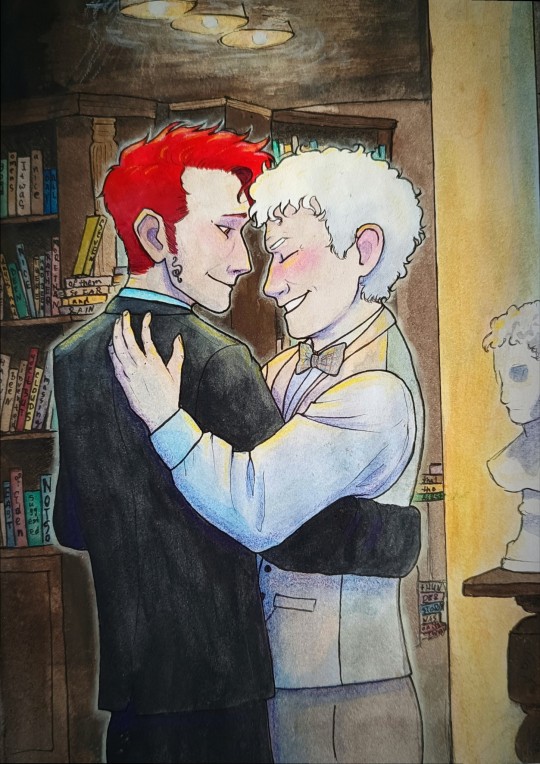
Bookshop dancing
And as per usual, some photos of the process. Hope you'll enjoy this illustration and have an awesome rest of your day 💙



Also, consistent art style? Who's she?
#good omens#gomens#good omens fanart#aziraphale#fanart#crowley#ineffable husbands#aziracrow#anthony j crowley#a. z. fell
40 notes
·
View notes
Text
i feel like aziraphale should get to say fuck again in season three. as a treat
#personal#let my baby get some of that stress out#a good f bomb can be cathartic#good omens#good omens fandom#gomens#gomens fandom#aziraphale#aziraphale fell#a z fell#a. z. fell#mr fell#mr. fell#michael sheen
170 notes
·
View notes
Text
I found this on Pinterest and immediately went to the show to see if I missed something (I didn’t)

Whoever photoshopped them holding hands in this scene I have two things to say
1) thank you for doing such a wonderful job, even if it didn’t happen in the scene it makes my heart happy to see it.
2) I am now incredibly angry that this wasn’t in the actual scene and will now go cry over what we missed
#good omens#gomens#ineffable husbands#anthony j crowley#crowley#good omens crowley#a. z. fell#aziraphale#ineffableproblem#good omens aziraphale
848 notes
·
View notes
Text
can i interest anyone in good omens doodles?






my instagram
!DO NOT REPOST!
i am not sure who is a good omens fan? and have even less of an idea if you would wanna be tagged but here goes: @inevitably-ineffable-husbands @totallysilvergirl @fuckyeahgoodomens @aziralock @helloliriels and well okay idk (please tell me if you wanna be added or removed from my ✨good omens taglist✨ (i sure as hell will write a good omens fic at some point too!))
#turtely draws#i was bored hehe#happy about reblogs! 🥰#i can't draw male-presenting people#so let's just pretend i drew them in my own style yes? 😁#good omens#good omens doodle#good omens fanart#aziraphale#crowley#azicrow#ineffable husbands#a. z. fell#anthony j crowley#blep#yay#artists on tumblr
48 notes
·
View notes
Text
Good Omens brainrot is unstoppable. The show that I'm watching has a song by the velvet underground in it and a book I'm reading used the word ineffably. I am unwell.
#good omens#good omens brainrot#the brainrot is real#ineffable#“what's a velvet underground?”#“Oh you wouldn't like it.”#“Ah bebop”#crowley#anthony j crowley#aziraphale#a. z. fell#aziraphale good omens#good omens aziraphale#good omens prime#crowley good omens#good omens crowley
52 notes
·
View notes
Text
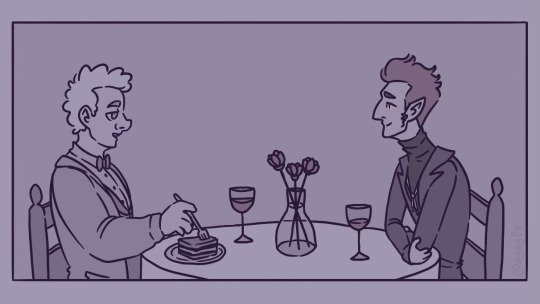

inktober / flufftober 2023
day 17: sharing food
the first time the restaurant's staff has seen the goth husband eat something
#good omens#good omens inktober#digital art#procreate#digital drawing#crowley#good omens crowley#good omens fanart#crowley fanart#ineffable fandom#aziraphale#aziracrow#good omens aziraphale#good omens comic#aziraphale x crowley#anthony j crowley#a. z. fell#inktober#ineffable husbands#ineffable inktober#inktober 2023#flufftober#flufftober 2023
96 notes
·
View notes